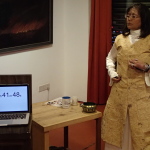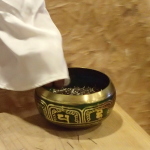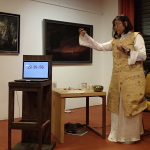This afternoon and evening we had the opportunity to spend the day with an amazing group of Nepali writers, poets, journalists, filmmakers and creative intellectuals and think about how the arts and humanities connect with issues related to climate change. The event, hosted at the City Museum, Kathmandu in collaboration with Lasanaa, a local artists collective, was the first of a series of events that ICI hopes to foster in the coming months and years.
Some of the initial questions or ideas raised by people at the table included:
– How to move beyond talk and get action on climate change and other social issues?
– Connecting with and using the mainstream media to tell our story.
– How to talk about climate change from an artistic perspective?
– Spiritual to practical to performance journeys linking Kailash to Kathmandu.
– Role of theatre, performance and local needs-based expressions (local vernacular) to address local issues in local communities.
– How to balance science and communication and not too much doom-and-gloom in the process?
– Using education and teaching to change views of youth and improve educational curriculum.
– How to use environmental poetry and communication as part of addressing climate change.

Participants at the City Museum, Kathmandu talk about the relationship between arts and humanities and climate change.
We also distributed two articles to the group dealing with some of the connections between climate change and the arts and humanities, with the hope that these initial articles will inspire further dialogue.
- Melting Ice: Climate Change and The Humanities by Jennifer Wells and Carolyn Merchant [PDF]
- Representing, Performing and Mitigating Climate Change in Contemporary Art Practice by Gabriella Giannachi [PDF]
One of the main challenges that seemed to appear during the conversations was how to move from ideas and discussion to action steps and concrete plans? Everyone agrees these discussions are important, but the urgency of climate change also calls us to action sooner rather than later.
One of the key ideas that the group seemed to return to in one form or another was the importance of education in reaching out and interacting with young people on climate issues. Some of the examples discussed included developing artistic residencies, working to change classroom lessons and curriculum, creating public art to raise awareness, and developing plays or storybook that young people can engage with directly.
Another of the ideas that seemed to resonate with the group was having spaces to share our work and ideas, but to do so in realistic ways that acknowledge everyone is already busy and has limited resources. We hope our efforts to facilitate these discussions, as well as providing a virtual space for these discussions to continue and expand.
Following this discussion, everyone quickly jumped up and the space was re-arranged and returned to its original gallery form. From there the evening performance by Ashmina Ranjit, and the art work of her father KG Ranjit, got into full swing.
Here is one of KG Ranjit’s pieces, which also appeared as the cover the the event handout today.

Nature Rage by KG Ranjit
Here are a few images from the opening hour of Ashmina Ranjit’s performance as well.









